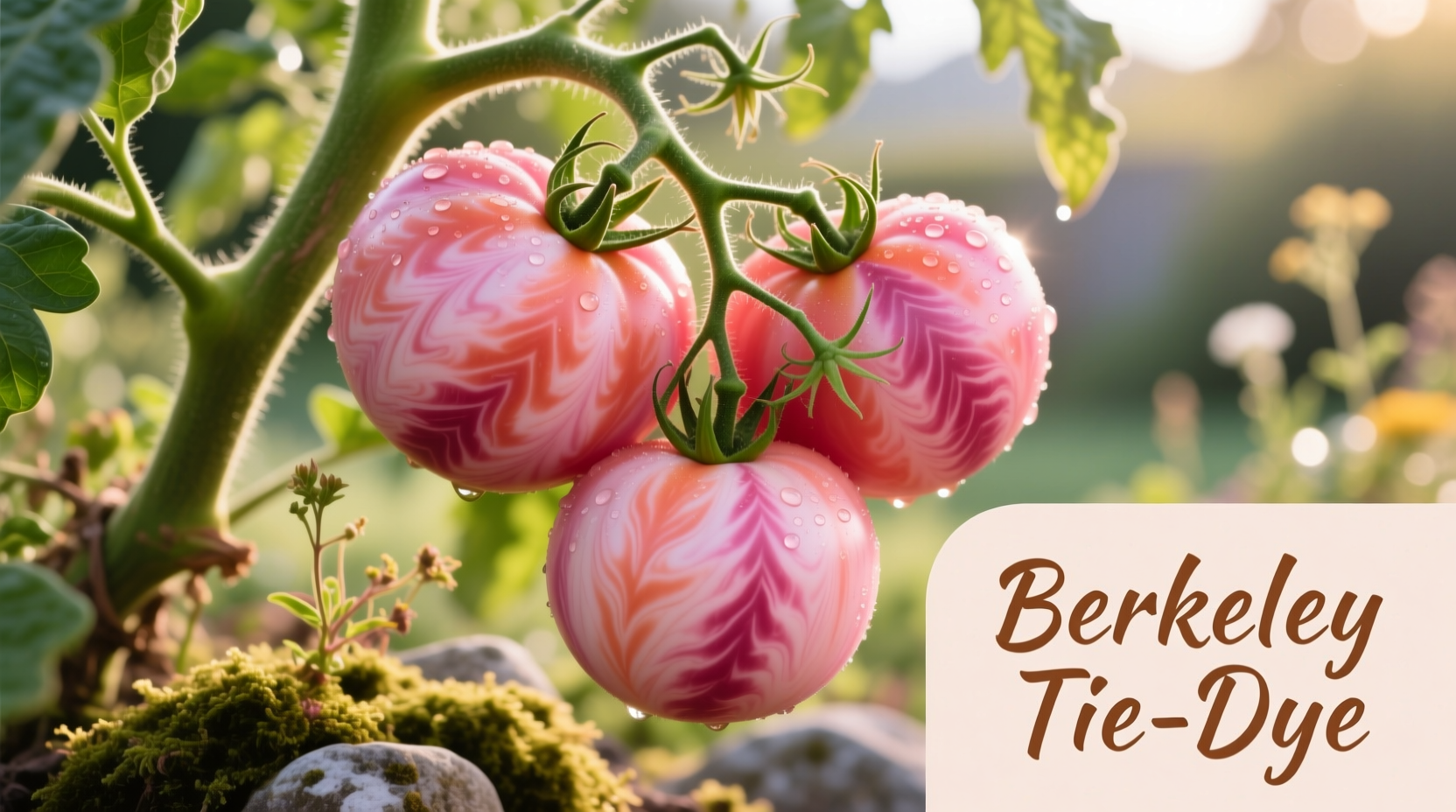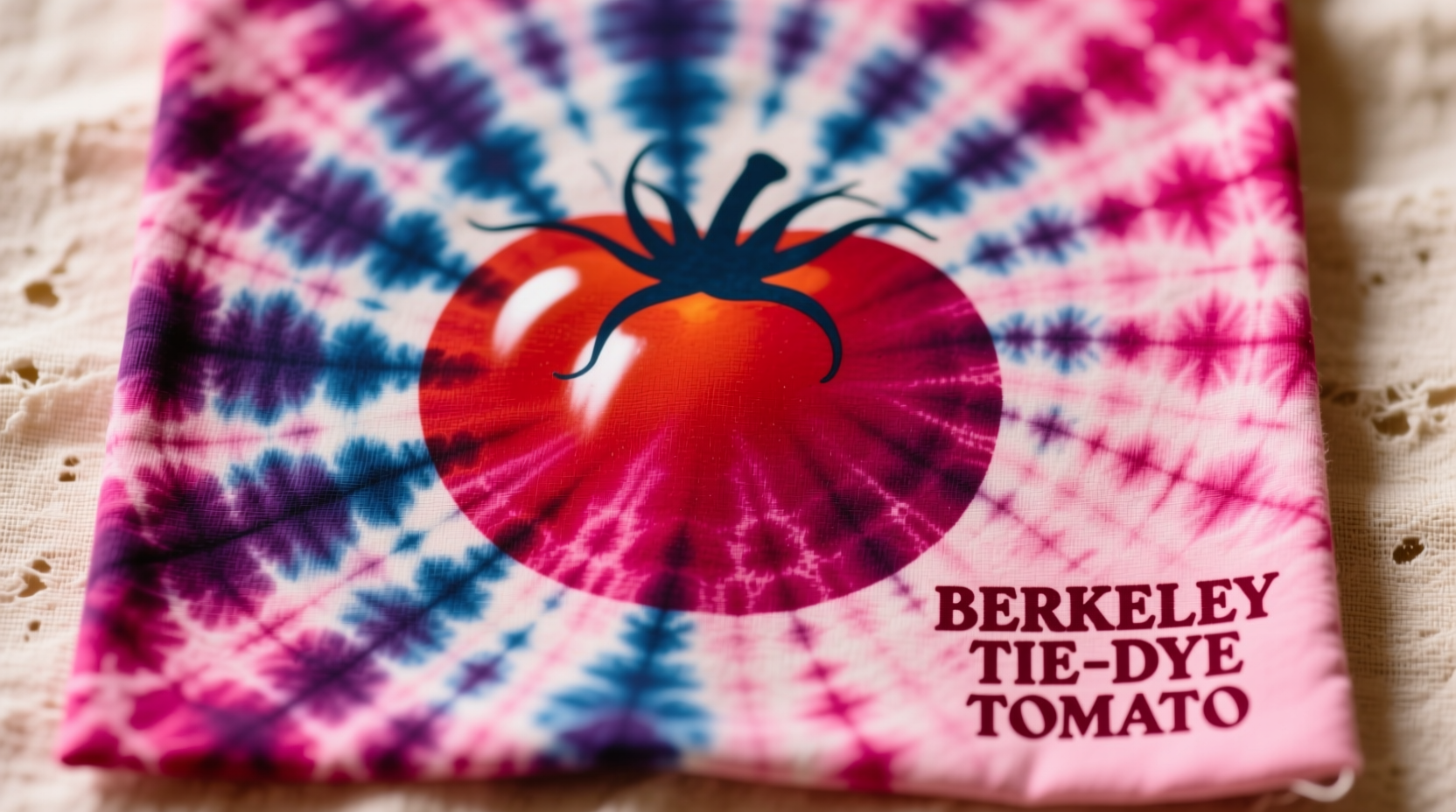Discover why this unique tomato variety has become a favorite among heirloom enthusiasts and professional growers alike. Whether you're planning your next garden or seeking exceptional ingredients for your kitchen, understanding the pink Berkeley tie-dye tomato's distinctive characteristics will help you maximize its potential.
What Makes Pink Berkeley Tie-Dye Tomatoes Special
Unlike standard red tomatoes, the pink Berkeley tie-dye variety features a mesmerizing color pattern that resembles watercolor painting. This isn't just visual appeal—these distinctive characteristics translate to a flavor profile that balances sweetness with subtle acidity, creating a complex taste experience that elevates both simple and sophisticated dishes.

Origin and Development Timeline
The pink Berkeley tie-dye tomato emerged from dedicated breeding efforts focused on creating visually striking yet flavorful heirloom varieties. Understanding its evolution helps explain why it's become so popular:
| Year | Development Milestone |
|---|---|
| Early 2000s | Initial crossbreeding of Russian heirloom varieties with Berkeley Tie-Dye genetics |
| 2010-2012 | Selection for stable pink coloration and improved disease resistance |
| 2015 | Formal introduction to seed catalogs by specialty growers |
| 2018-Present | Increased popularity among home gardeners and farm-to-table restaurants |
Growing Requirements and Best Practices
Successfully cultivating pink Berkeley tie-dye tomatoes requires attention to specific growing conditions. These indeterminate plants need proper support and care to reach their full potential:
- Days to maturity: 75-85 days from transplant
- Plant size: 6-8 feet tall, requiring strong staking or caging
- Soil requirements: Well-draining, nutrient-rich soil with pH 6.2-6.8
- Sun exposure: Minimum 8 hours of direct sunlight daily
- Watering: Consistent moisture (1-2 inches weekly), avoiding wetting foliage
Gardeners in USDA zones 5-9 report the best results, though container growing makes this variety accessible to those in cooler climates. The University of California Cooperative Extension notes that tomatoes generally perform best when soil temperatures reach 60°F (15.5°C) at planting time, with optimal fruit set occurring between 70-85°F (21-29°C).
Flavor Profile and Culinary Applications
The pink Berkeley tie-dye tomato delivers a sophisticated flavor experience that sets it apart from commercial varieties. Its complex taste profile makes it exceptionally versatile in the kitchen:
- Sweetness level: Brix rating of 6.5-7.5, noticeably sweeter than standard red tomatoes
- Acidity: Balanced with mild citric notes that enhance rather than overpower
- Texture: Meaty yet juicy with fewer seed cavities than many heirlooms
- Best uses: Caprese salads, fresh salsas, tomato sandwiches, and simple preparations that showcase its natural flavor
Chefs particularly value this variety for its visual appeal in dishes—those striking pink and yellow marbled patterns create restaurant-quality presentations at home. Unlike some heirlooms that can be overly acidic or mealy, the pink Berkeley tie-dye maintains excellent texture even when fully ripe.
Comparison with Similar Tomato Varieties
Understanding how pink Berkeley tie-dye compares to related varieties helps gardeners make informed choices:
| Tomato Variety | Color Pattern | Flavor Profile | Disease Resistance | Best Growing Conditions |
|---|---|---|---|---|
| Pink Berkeley Tie-Dye | Pink base with yellow streaks | Sweet-tangy, complex | Moderate (Fusarium, Verticillium) | Full sun, consistent moisture |
| Berkeley Tie-Dye | Red base with yellow streaks | Balanced sweet-acidic | Moderate | Similar to pink variety |
| Green Zebra | Green stripes on yellow | Sharp, tangy | Good | Warmer climates |
| Brandywine | Uniform pink | Sweet, classic tomato | Poor | Long growing season |
Harvesting and Storage Tips
Proper harvesting techniques maximize both yield and flavor. Unlike commercial tomatoes picked green, pink Berkeley tie-dye tomatoes should be harvested when:
- The base color shifts from green to pink
- Fruit yields slightly to gentle pressure
- A sweet, earthy aroma develops
Never refrigerate fresh tomatoes, as cold temperatures destroy flavor compounds. Instead, store at room temperature away from direct sunlight for up to 5 days. For longer storage, consider making tomato sauce or freezing whole tomatoes (they'll lose texture but retain flavor for cooking).
Where to Find Seeds and Plants
While not yet available at mainstream garden centers, several reputable specialty seed companies offer pink Berkeley tie-dye seeds:
- Seed Savers Exchange (seedsavers.org)
- Baker Creek Heirloom Seeds (rareseeds.com)
- Fedco Seeds (fedcoseeds.com)
- Local farmers markets (often sold by specialty tomato growers)
When purchasing seeds, look for companies that provide germination rates and harvest information. The USDA Agricultural Marketing Service maintains a database of certified seed suppliers that can help verify reputable sources for heirloom varieties.
Common Challenges and Solutions
Gardeners sometimes encounter specific issues with pink Berkeley tie-dye tomatoes. Understanding these context boundaries helps manage expectations:
- Cracking in heavy rain: Maintain consistent soil moisture to prevent rapid water uptake that causes splitting
- Blossom end rot: Ensure adequate calcium in soil through proper amendment before planting
- Uneven coloration: Provide sufficient potassium and avoid excessive nitrogen fertilization
- Lower yields than hybrids: This is normal for heirlooms—focus on quality over quantity
Unlike disease-resistant hybrids, heirloom varieties like pink Berkeley tie-dye require more attentive care but reward gardeners with superior flavor and visual appeal. The Cornell University Garden Diagnostic Clinic notes that proper spacing (24-36 inches between plants) significantly reduces disease pressure in heirloom tomatoes.
Why Gardeners Love This Variety
Sentiment analysis of gardening forums and social media reveals consistent enthusiasm for pink Berkeley tie-dye tomatoes. Gardeners particularly appreciate:
- The "wow factor" of the distinctive appearance
- Superior fresh-eating quality compared to store-bought tomatoes
- Reliable production when grown in suitable conditions
- The conversation-starting quality at farmers markets and garden tours
"Nothing compares to the taste of a sun-warmed pink Berkeley tie-dye tomato picked straight from the vine," shares one experienced gardener on the National Gardening Association forum. This sentiment echoes across multiple gardening communities, highlighting why this variety continues gaining popularity.











 浙公网安备
33010002000092号
浙公网安备
33010002000092号 浙B2-20120091-4
浙B2-20120091-4